The Bronze Age is the era of the two-horse chariot. Made possible by the invention and combination of the wheel, cart and domesticated horse, in the Neolithic era. The Early Bronze Age was the time of warring city-states with the first organised armies and chariots drawn by wild asses.
The Middle Bronze Age saw the rise of mighty kingdoms and the introduction of the fast horse-drawn chariot with spoked wheels. The Later Bronze Age saw the expansion of these kingdoms into widespread empires, doubtless made possible by the mobility of the chariot and the increase in trade resulting from innovations in ship design. Towards the end of the Bronze Age and in the early Iron Age, the mounted warrior riding a horse or camel appeared to challenge the supremacy of the chariot warrior. Infantry warriors became better armed, armoured and disciplined. Chariots continued in use, but the light, fast two-horse chariot with two crew was gradually replaced by heavier chariots with four horses and three or four crew.
Chariot Duels
This is a skirmish battle between chariot warriors, focusing on the chariots themselves. Homer, author of the Iliad, regarded the Trojan War as marking the end of the Bronze Age. It also ended the ‘heroic age’ of chariot warfare.
Hittite records that refer to Wilusia, Taruisha and Ahhiyawa, that is Ilium, Troy and the Achaeans reveal that these events probably occurred towards the end of the Hittite Empire. The Iliad is full of heroic duels between rival charioteering heroes. It was the custom that opposing chariot warriors would challenge each other to personal combat before the clash of armies or during a lull in the fighting.
“Now you have in your army the finest men in all Achaea. Is one of these prepared to fight me? If so, let him step forward…”
Hector addresses the assembled Achaen host.
The aristocratic chariot warriors of the Bronze Age can perhaps be compared to the much later knights and indeed, the Bronze Age Greek word for chariot lord was Eqeta, ancestral to the Latin word Equites for a mounted soldier. In the Near East, the word was Maryannu, meaning ‘Young Hero’ and is related to the Sanskrit word Maher. The Canaanite word Ne’Arim has a similar meaning.
These warriors, who fought mainly with composite bows, javelins and sometimes a thrusting spear and wore the best armour and rode lightweight chariots drawn by usually barded horses, can also perhaps be compared to the flying aces of the First World War. Both had flimsy war machines and cultivated the heroic ideal of combat, although the aces were far more gentlemanly than chariot warriors.
The odds against survival and chances of a short career ending in heroic death were great for both and both passed into legend. It is often asked, ‘How did anyone fight in a chariot?’ Well, they did, and devised many and varied tactics and decided the fate of kingdoms in this way. So the answer is, however you can fight in a chariot is what they did. Who were the bravest warriors of antiquity? Was it the chariot warriors because ‘they fought with the equipment that they had!’? Experimental archaeology may answer more detailed questions and various chariots have been reconstructed, often with surprising results.
The Battle
The fighting around Troy has reached a prolonged stalemate creating the opportunity for chariot warriors on each side to come out into the plain before the city to challenge each other. Champions from both sides fight in duels aimed not only at winning renown, but boosting the morale of their own side and knocking out enemy leaders and commanders. The Achaeans have no shortage of heroes, although they are getting fewer as the war drags on. The same applies to the Trojans, but they are reinforced by heroes from elsewhere in Anatolia, drawn to Troy as allies and the chance to win fame in battle.
In this skirmish-style battle, each player either plays a single heroic chariot warrior or a small team of chariot warriors. Each model is treated as a tiny unit in itself with enhanced values rather as a champion would be in a ‘fantasy’ game. Each player can also choose something from a list of special abilities, weaponry or armour.
You can find more information about this scenario on page 133 of the Age of Bronze book!
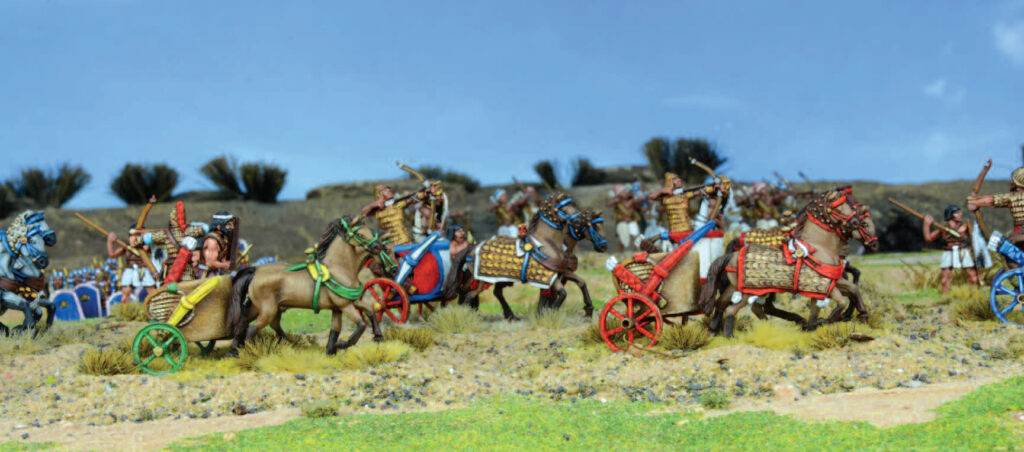
Getting Started with the Bronze Age
The Age of Bronze can be a fantastic starting step in collecting Hail Caesar; not only are there specific scenarios in the Age of Bronze Book, such as the chariot duels, there is additional guidance for adapting the Hail Caesar rules into a skirmish wargame, allowing you to play swift, action-packed games with a much smaller model count on a smaller playing surface. This is a great facilitator to allow hobbyists to reap the benefits of a collection and get stuck into games much more quickly, whilst they build their forces to the suitably grand & traditionally sized Hail Caesar formations.
Your first port of call is therefore the Age of Bronze supplement, which provides the skirmish rules, and myriad scenarios and guidance to field Bronze Age troops on the battlefield. Note that this is a supplement, and requires the Hail Caesar base rules to play. You may also want to consider Army Lists: Biblical to Early Medieval, to further refine and contextualise the specific era and army you want to play.
Once you’ve settled on the specific army you want to collect, we’ve a multitude of Army deals that will get you started, many of which incorporating the all-important chariots of course!
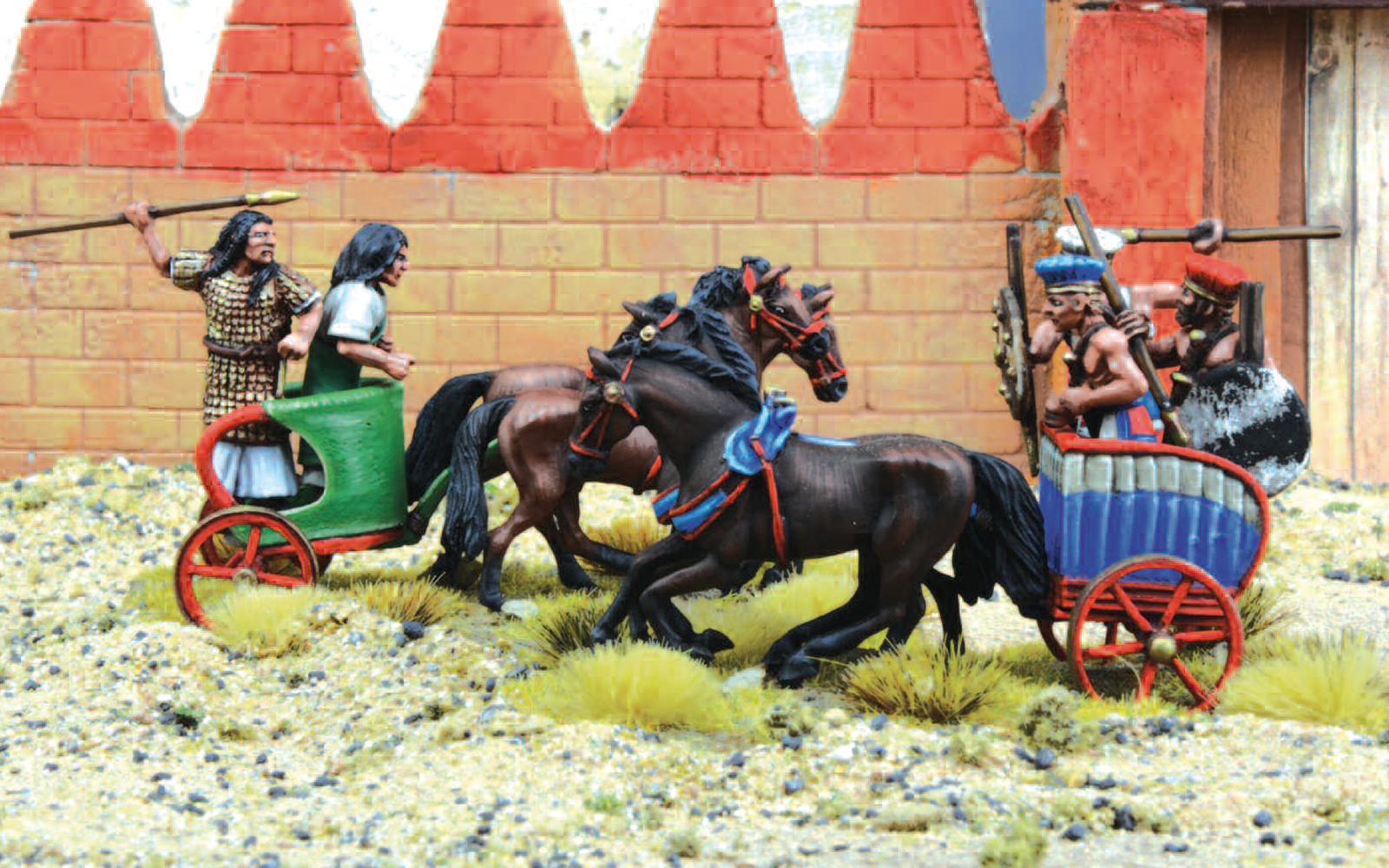
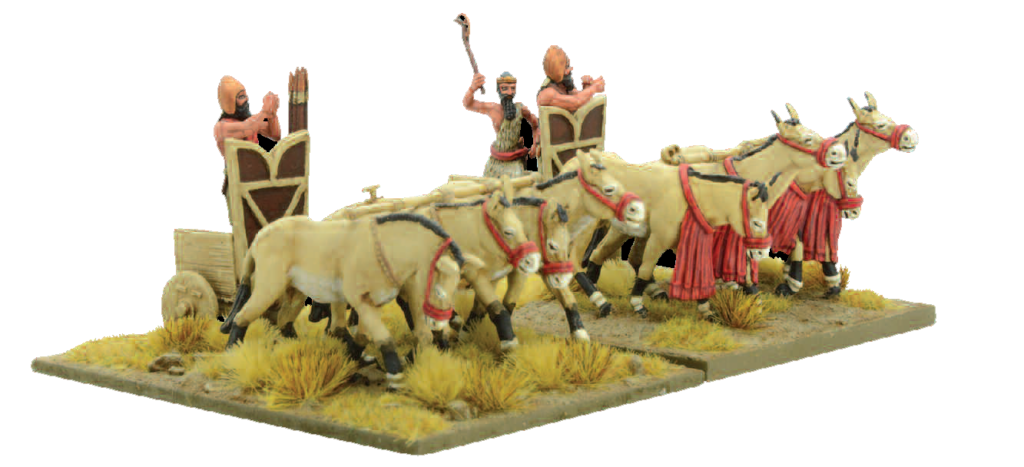
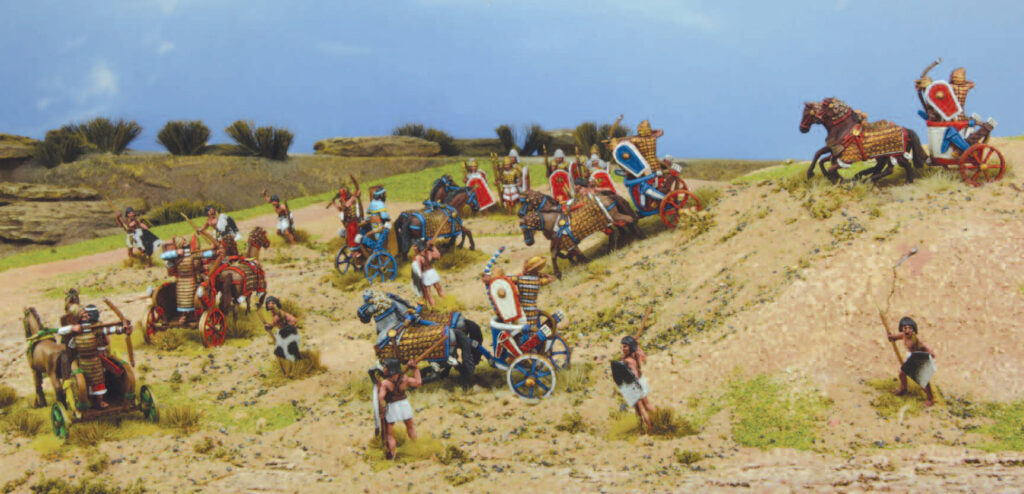
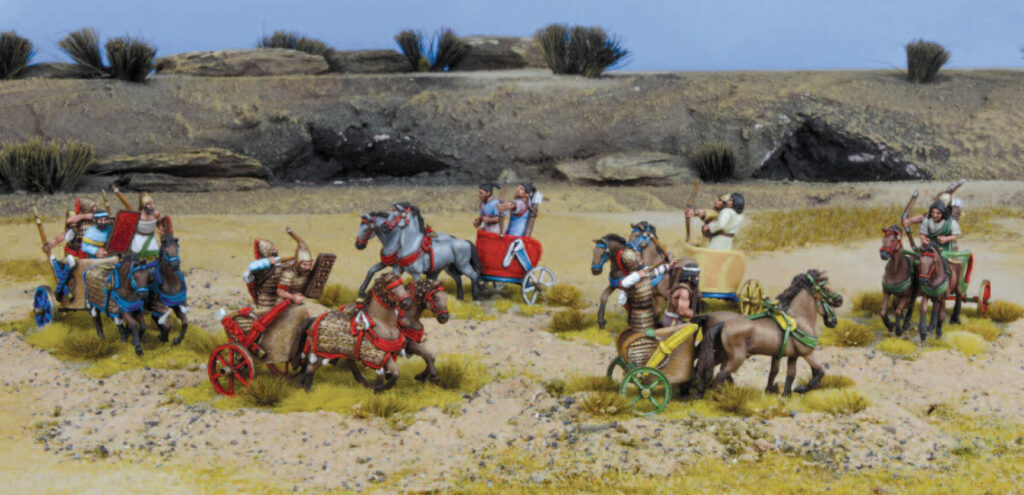
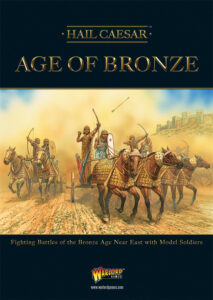
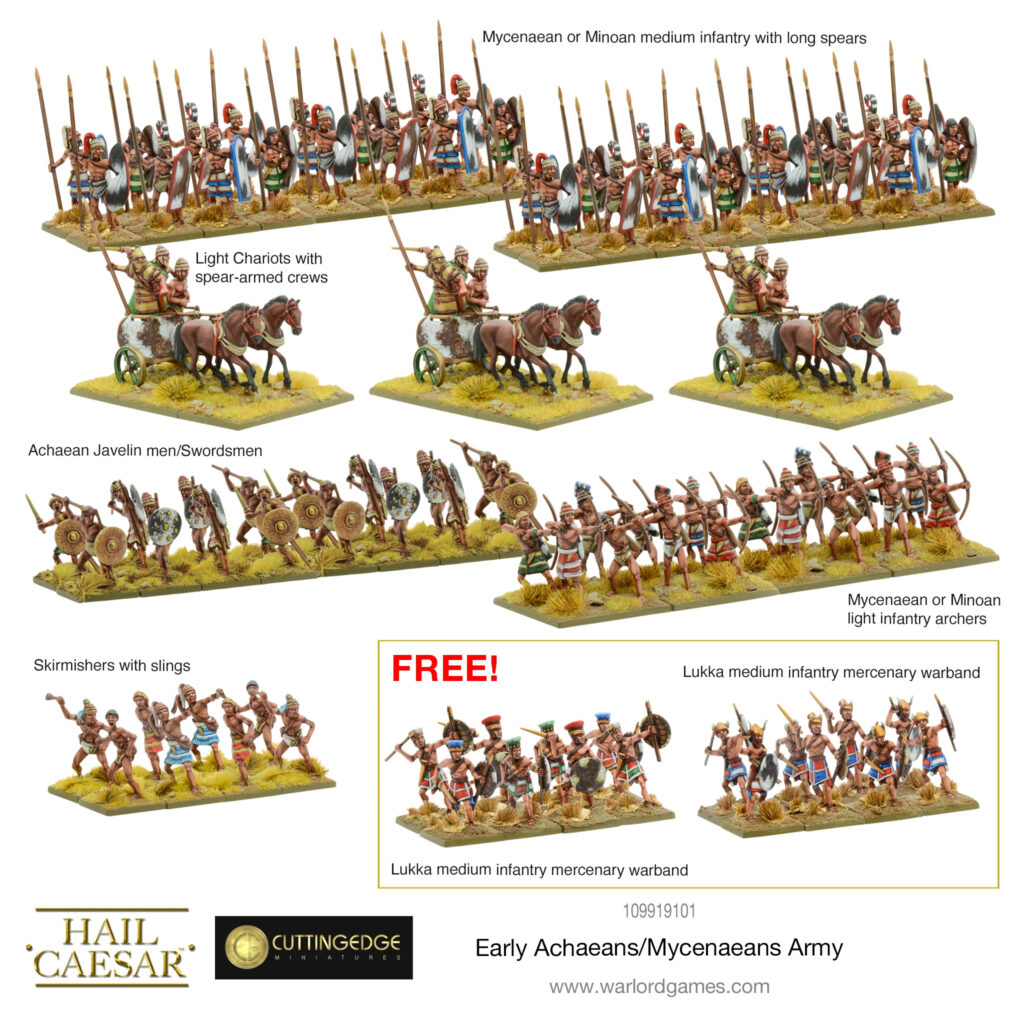
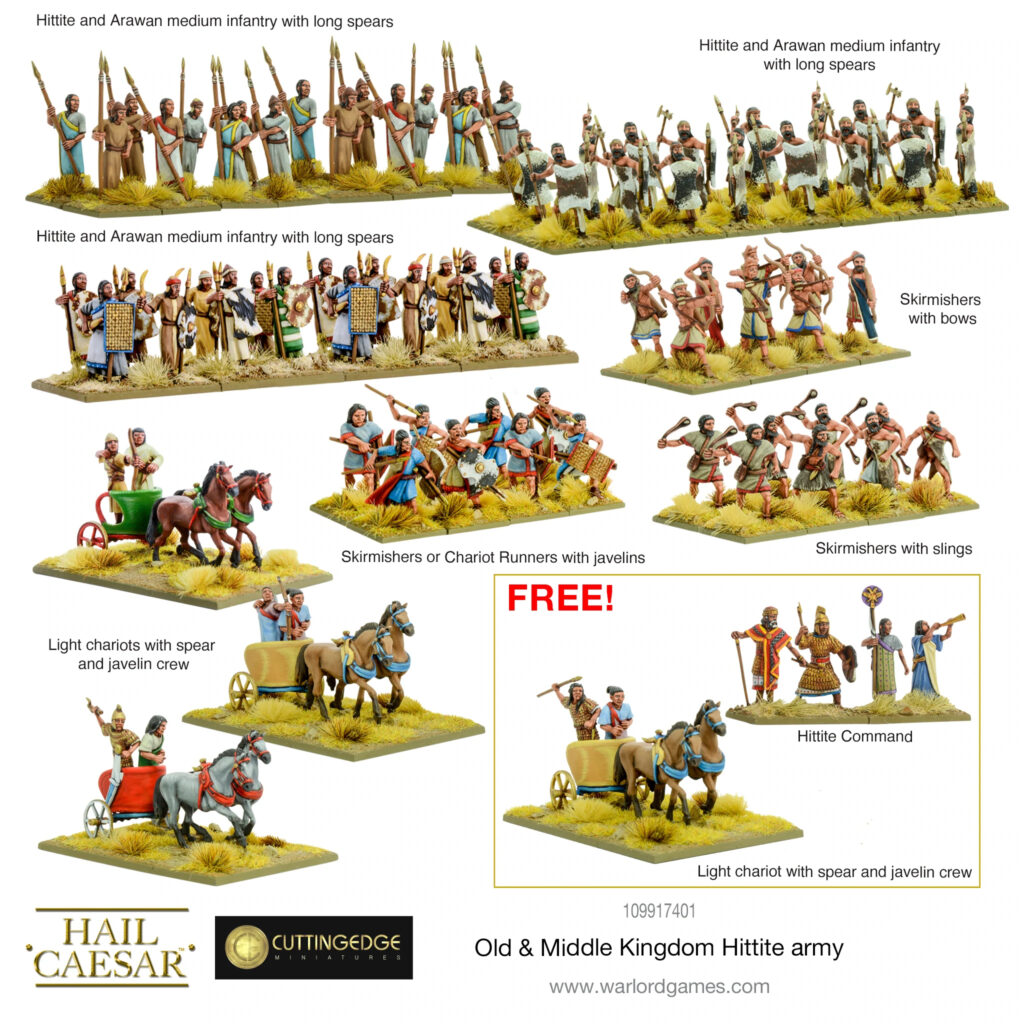
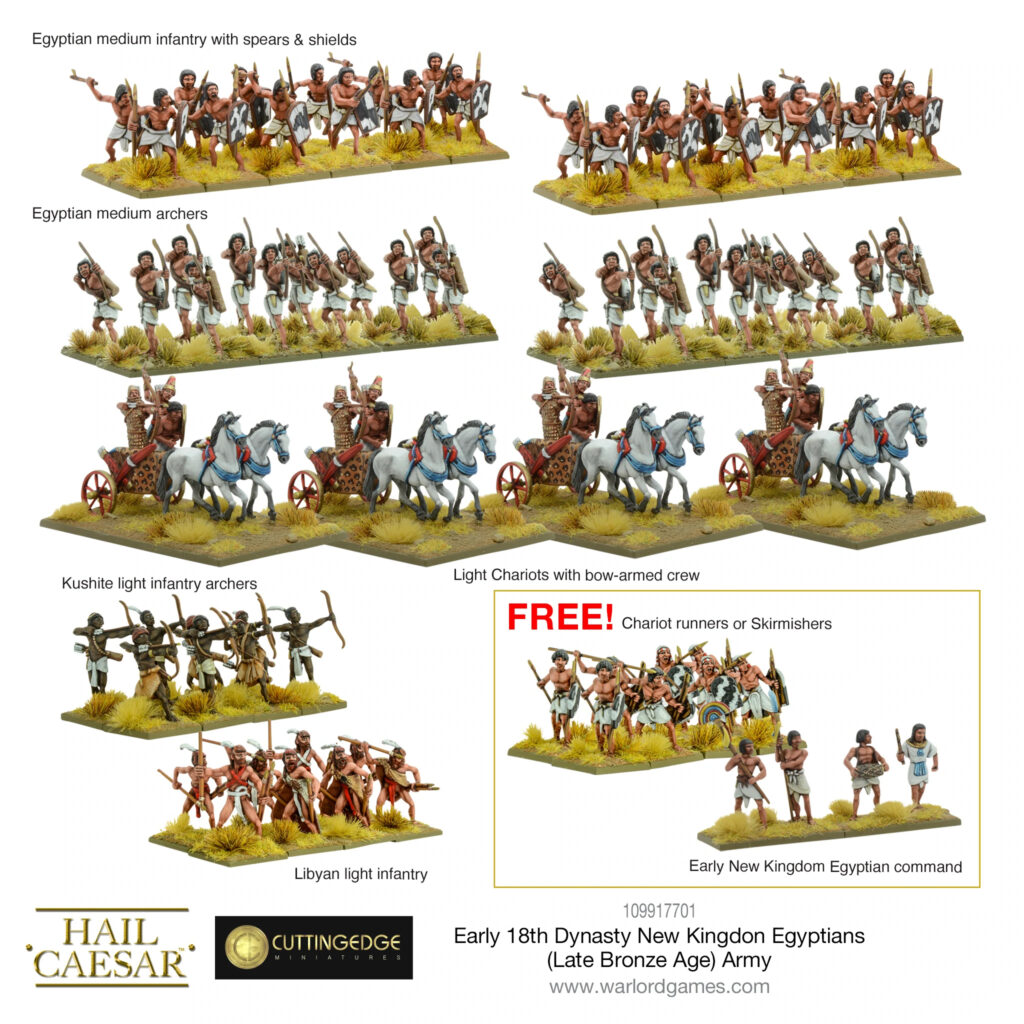
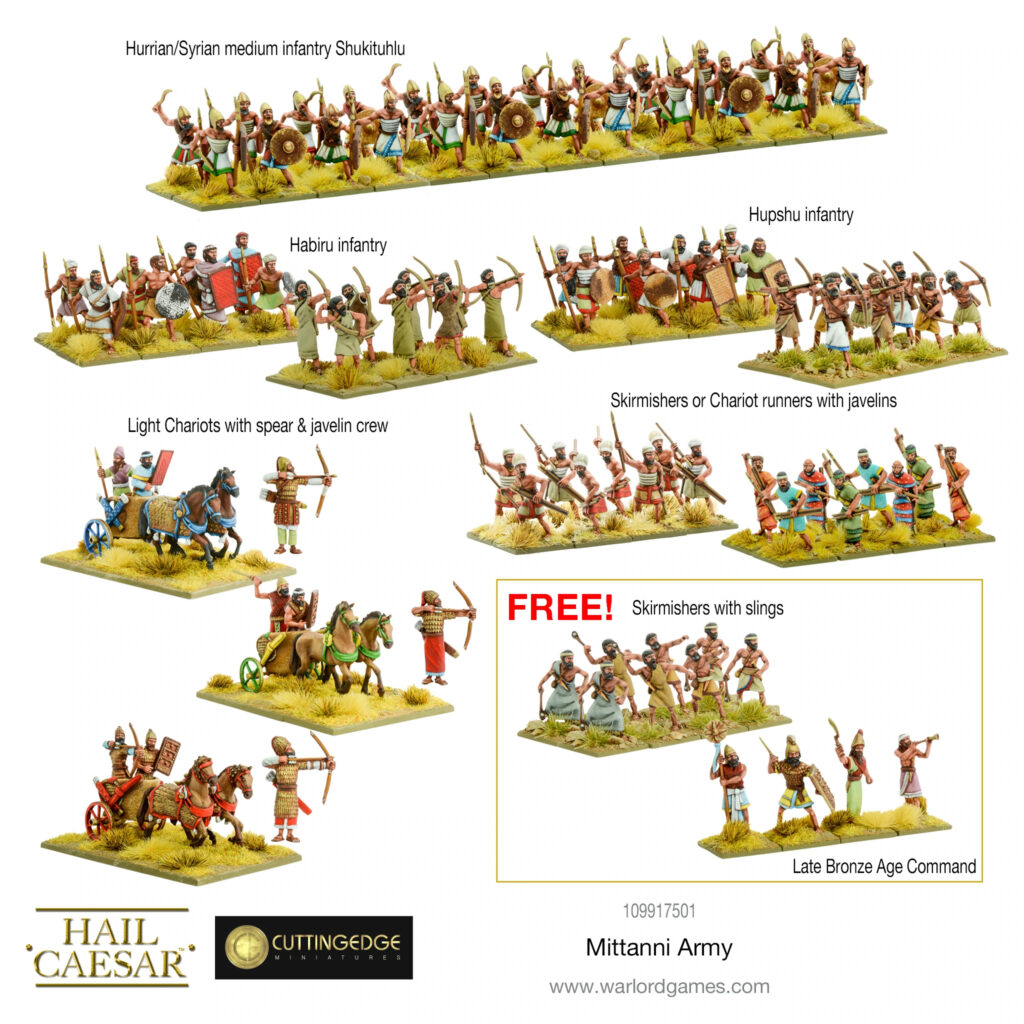
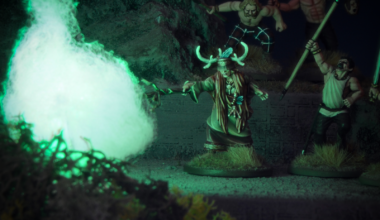
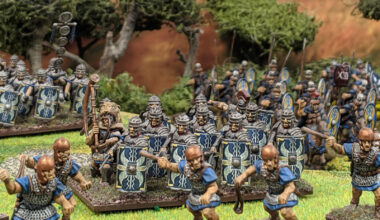
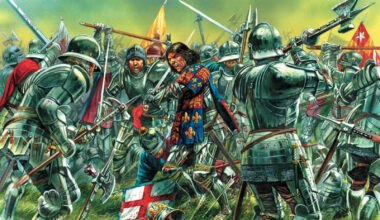
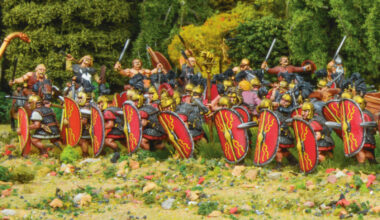
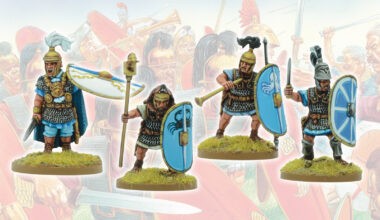
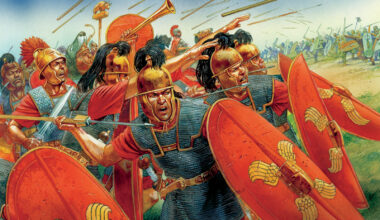
1 comment
Chariots for Slaine?
Comments are closed.